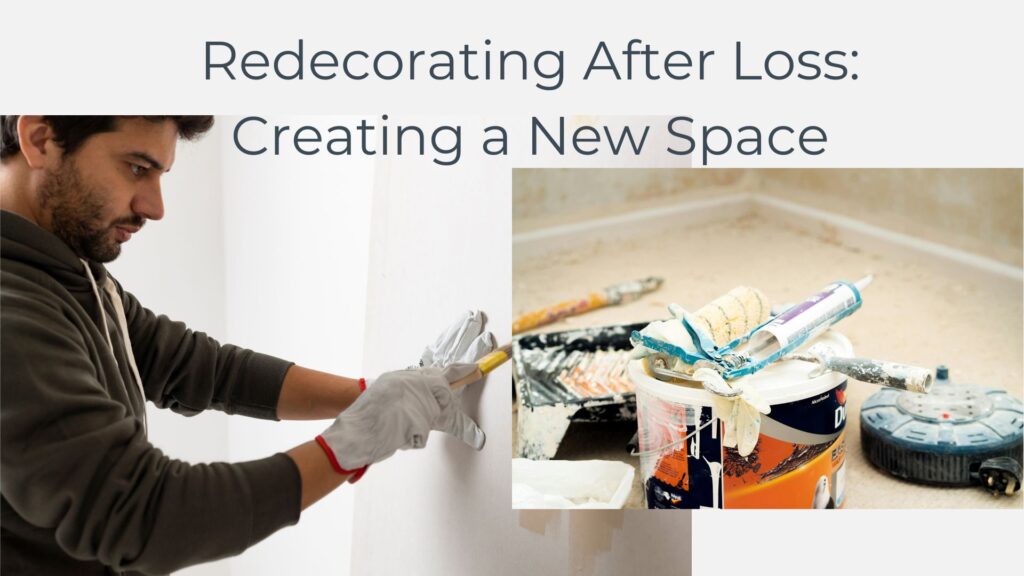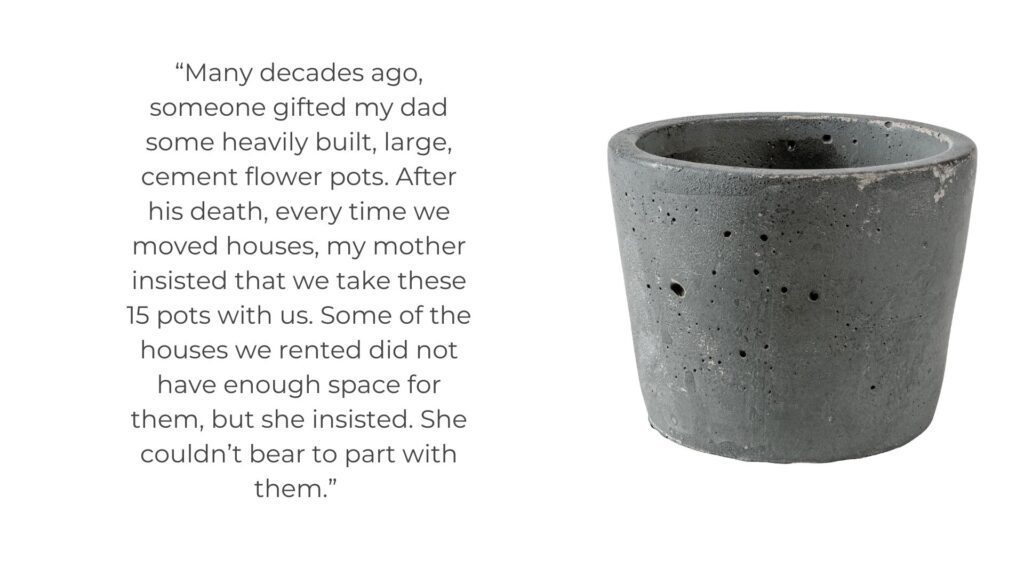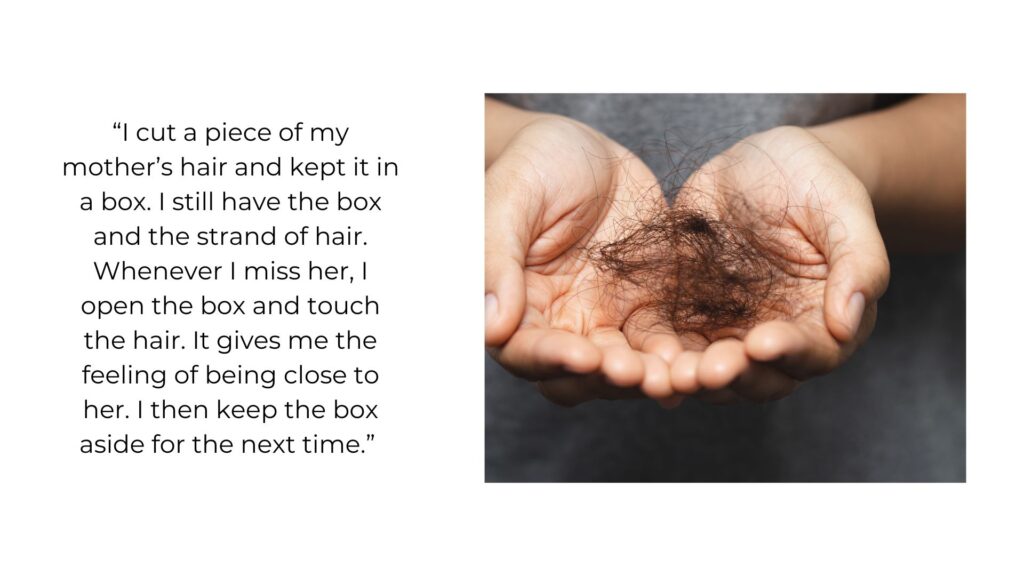
“We left some of my late husband’s clothes in the cupboard for a year after his passing. Every time one of us missed him, we would open the cupboard and inhale his scent. The scent lingered for a year. After a year, I removed the clothes and gave them away.” – Neelima, content writer, Kochi

Losing a spouse or a loved one can change how we feel about the very space we shared with them, our home. A house that was full of happiness and security can suddenly be a painful reminder of our loss.
There are several ways this can be countered. One, and not the most financially viable option, is to move away from the house. The next way is to redecorate the whole house. Again, this might clash with our desire to keep the memories intact. A third way is to maintain some areas or leave certain items in the house intact. That space or items will work as our connection to the loved one—you are reinventing your relationship to your loved one in a different way here.
“Many decades ago, someone gifted my dad some heavily built, large, cement flower pots. After his death, every time we moved houses, my mother insisted that we take these 15 pots with us. Some of the houses we rented did not have enough space for them, but she insisted. She couldn’t bear to part with them.” – Kaneez, comedian, Kozhikode

In many families, there might be a conflict between the need to preserve memories and move through grief, as referenced in the case of Kaneez and her mother. When family members have differing opinions, it might be difficult to strike a balance.
“Do not take important decisions regarding property, especially valuable property, when you are still in the process of grief. There are some decisions that you may have to take quickly, but the rest can be done slowly. Try changing the location of the furniture, or get a new set of bed sheets. See how you feel about the change. You can always change them back if you feel you are not ready.” – Kamal, relationship expert, Rematch.
If you have too much stuff that belonged to your late loved one or partner and do not know what to do with it, keep some of the best pieces aside. You can set aside a tabletop, a corner of a room or a cabinet to display these or store these. Letting the entire house up as a monument to a lost love will neither be practical nor psychologically healthy. Yes, everyone has their own time and way to sort through grief. But, Miss Havisham of Great Expectations, is not what you should aspire to be (Miss Havisham refused to remove her bridal dress throughout the novel to remember that her lover jilted her).
If you do move to a new place, and you are moving to a smaller home, then it might not be practical to move all the furniture and knick-knacks from the old home. Pick a few pieces you cannot live without. Or you will end up like Kaneez’s mom, forcing the family to move with unwieldy pieces—flower pots—that really did not make sense to Kaneez. Alternatively, you can re-upholster a favourite couch and take it with you, thus maintaining the old to align with your new life.
“Thinking from a logical point of view, one’s children carry one’s chromosomes. When a parent dies, the child does not need to keep any keepsake because their body carries their parent’s genes.” -Anupama, general physician, Auckland.
Grief should not move to complex grief, where an entire room is maintained as a shrine for years on end. Then, you are not moving past the normal human experience of grief. There are people who would shut the door to the room and never go in. That is absolute denial. You are not moving at all; You are not able to reinvent their relationship in that scenario.
“I cut a piece of my mother’s hair and kept it in a box. I still have the box and the strand of hair. Whenever I miss her, I open the box and touch the hair. It gives me the feeling of being close to her. I then keep the box aside for the next time.” – Robert, mechanic, Thiruvananthapuram

Conclusion
Redecorating after a loss is a process of moving forward and dealing with the grief. You include items that have sentimental value. These could be photographs, artwork, furniture, vessels, jewellery, and so on. Parting with items will be hard. Do decide carefully what you want to keep, repurpose, or let go.
Opt for colours and themes that are soothing and align with the new life that you are leading. Feel free to dedicate a wall or section of a room to the departed loved one. The space should also have elements of newness to give it a sense of positivity. Above all, be open to change. Redecorating is not just about changing your surroundings; it’s also about creating a space that nurtures your emotional well-being.
Redecorating after a loss is an important step in starting a new chapter in life, creating a space that brings comfort and hope. While you are reimagining your surroundings, why not also reimagine your connections? Download the Rematch app today to meet like-minded people and find meaningful connections as you embrace this new journey. Let Rematch be your companion in creating brighter tomorrows!
References
Flegg, Eleanor. “Interiors: How Redecorating After Losing a Loved One Can Help Ease the Pain of Grief and Honour the Departed.” Irish Independent, October 25, 2024.
Rocca, Jane. “Grief and Home Decor: What to Do After the Loss of a Loved One.” Domain, November 5, 2020.

